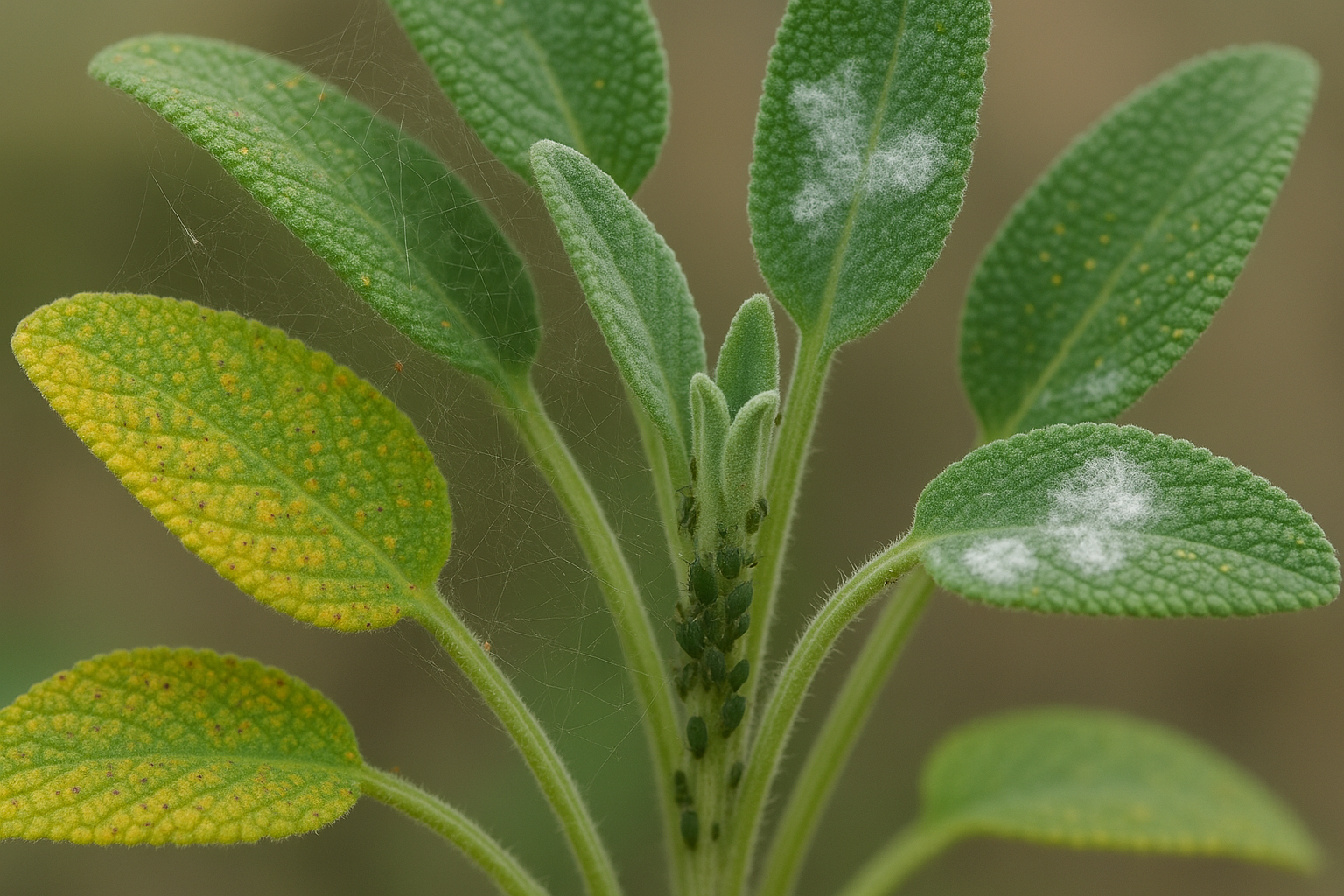Why Are My Sage Leaves Turning Yellow?

Noticing your sage leaves turning yellow can be discouraging, but you’re not alone—this is a common concern for gardeners, whether you’re tending herbs on a sunny windowsill or growing a patch outdoors. Yellowing in sage leaves often signals that something isn’t quite right with your plant’s environment or care routine.
The most frequent culprits include:
- Overwatering, which leads to soggy roots and nutrient deficiencies
- Poor soil drainage
- Pests like spider mites or aphids
- Lack of sunlight
Early identification of the cause is crucial because prompt action can help you save your sage and prevent further decline. In the following sections, we’ll dive deeper into specific causes, teach you how to spot early warning signs, and walk you through practical steps to revive your ailing sage—so you can get back to enjoying its aromatic leaves in your kitchen and garden.
Water Woes
Yellowing leaves on your sage plant often signal water-related stress, whether from overwatering or underwatering. Overwatering suffocates the roots, leading to soggy, limp foliage, yellow leaf tips, and even root rot—a common issue in containers without proper drainage holes. On the other hand, underwatered sage shows wilted, crispy leaves that lose their vibrant green color, turning dull and yellow due to dehydration.
Both extremes weaken the plant, making it less vigorous, fragrant, and flavorful. To prevent this, use well-draining soil—a mix of potting soil combined with sand or perlite—and always select pots with drainage holes to allow excess water to escape.
Let the top inch of soil dry out completely before watering again. This usually means watering indoor sage once every 7–10 days, and even less frequently for outdoor plants in humid climates. Always check soil moisture with your finger first rather than following a strict schedule, since temperature and sunlight affect how quickly your sage dries out.
By paying attention to these signs and adjusting your watering routine, you’ll keep your sage healthy, green, and ready for culinary use.
Lighting and Nutrient Deficiencies
If your sage plant’s leaves are turning yellow, don’t overlook the power of light—insufficient sunlight or too much shade is a common culprit. Sage thrives in at least six hours of direct sun each day; anything less can cause leaves to fade and yellow as the plant struggles to photosynthesize.
If your garden or windowsill is shaded, try moving pots to a sunnier location, pruning nearby plants to reduce competition for light, or even using grow lights indoors during darker months. Lighting issues sometimes mimic nutrient deficiencies, so it’s important to address both.
Low nitrogen is another frequent cause of yellowing, especially in older leaves. This is best corrected with a light application of an all-purpose organic fertilizer or well-rotted compost in early spring. Iron deficiency often causes newer leaves to yellow while veins remain green—a condition known as chlorosis. This is more likely in alkaline soils.
To help, test your soil’s pH, and if it’s above 7.0, consider adding sulfur or composted organic matter to gently boost acidity. Healthy sage also needs well-draining soil—avoid waterlogged spots as persistently wet roots impair nutrient uptake.
Regularly check your sage for signs of stress, feed with a balanced fertilizer every few months during the growing season, and refresh mulch with compost to provide slow-release nutrients while supporting healthy microbial life in the soil. By balancing sunlight, nutrients, and good soil care, you can keep your sage lush, green, and thriving year-round.
Pests and Diseases Targeting Sage

Sage, though hardy, can sometimes fall victim to common pests like aphids and spider mites, as well as diseases such as powdery mildew and root rot. You might notice tiny green or black aphids clustered along stems, sucking sap and causing curled, sticky leaves. Spider mites often leave behind fine webbing and yellow-speckled foliage.
Diseases like powdery mildew appear as white, floury patches on leaves, while root rot shows up as yellowing, wilting, and mushy roots, usually caused by overwatering.
Managing Pests Organically
- Spray leaves with insecticidal soap or neem oil.
- Encourage beneficial insects like ladybugs.
Chemical Options
If needed, choose miticides or safe pesticides, but always follow the label instructions carefully.
Preventing Diseases
- Water at the soil level to avoid wetting leaves.
- Ensure good air circulation around plants.
- Avoid overcrowding your sage plants.
Pruning and Care
Regularly pinch off or trim diseased, damaged, or infested leaves and discard them immediately (never compost) to prevent disease spread.
If root rot occurs, remove the affected plant, improve soil drainage, and let the soil dry out before replanting.
With diligence and swift action, your sage plants can stay healthy and productive.
Healthy Habits
Successful container gardening depends on a few simple, repeatable habits that keep your plants thriving. Start by watering your containers consistently—check soil moisture daily, especially in hot weather, and water when the top inch of soil feels dry to the touch.
Take a few minutes each week to prune dead or yellowing leaves, which helps prevent disease and encourages healthy new growth. Make sure your containers aren’t crowded; space them out to boost airflow, reducing the risk of fungal problems.
Regular inspections are key: look under leaves and at soil level for insects, wilt, or spots so you can tackle small problems before they spread. Mulching your containers with straw or bark chips helps retain moisture and keeps roots cool, while rotating container placement every couple of weeks evens out sun exposure and prevents pest buildup.
Troubleshooting issues might seem daunting at first, but confidence grows with practice—if you spot anything unusual, snap a photo and search reputable sites like the University Extension Garden Resources or Fine Gardening Troubleshooting Guides.
A little daily attention goes a long way in creating a lush, healthy container garden, so don’t stress over perfection. With routine care and preventive steps, you’ll be able to enjoy vibrant plants and easily handle challenges as they arise.
